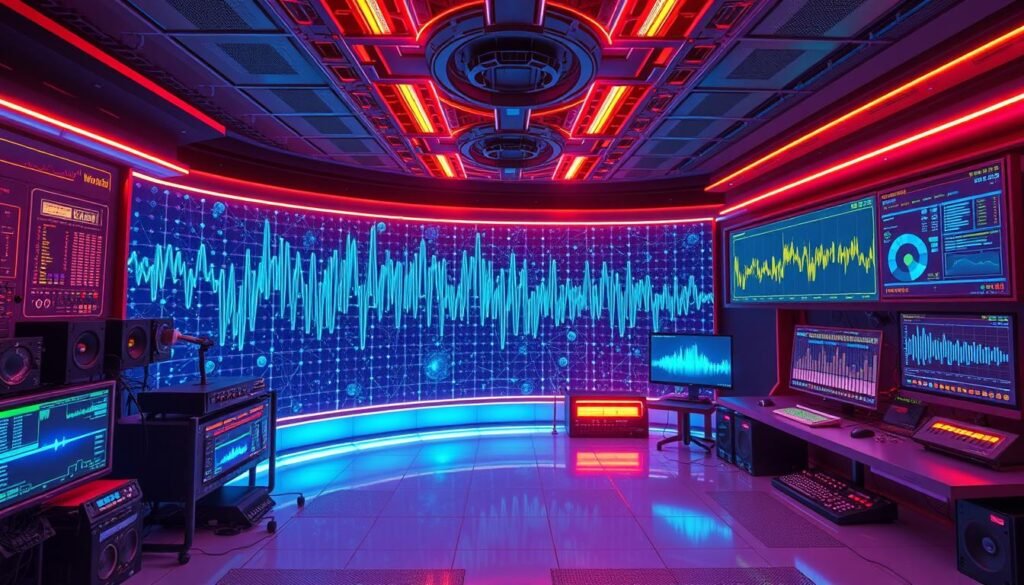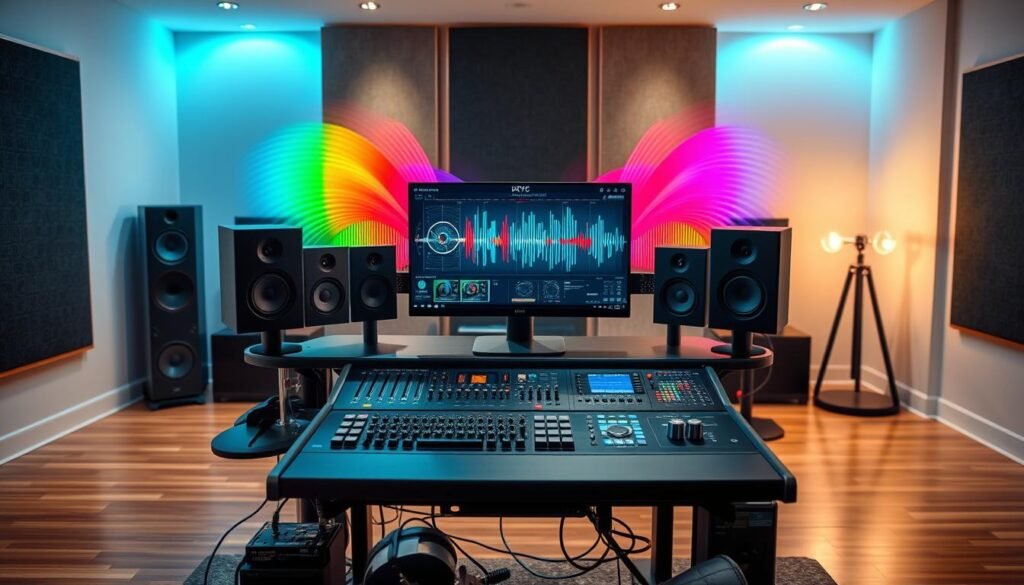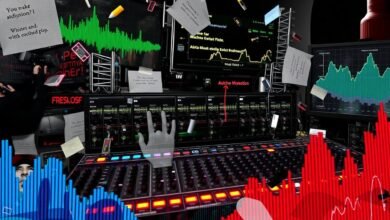Fixing Audio Moderation Error: Quick Tips

Audio moderation errors can really impact the quality of what we see and hear. This leads to a poor experience for users. It’s important for those who create and manage content to know about these errors. By understanding, they can keep the quality high.
Having a solid process for moderating audio is key. This helps fix any issues quickly. The goal is to make the content better. In this section, we’ll show you some key tips. They will help you tackle these problems more easily.
Key Takeaways
- Understanding audio moderation errors is crucial for content quality.
- Implementing quick fixes can enhance user experience.
- Effective moderation processes are necessary for managing audio content.
- Improving moderation practices leads to better engagement.
- Proactive solutions prevent future audio issues.
Understanding Audio Moderation Errors
Audio moderation mistakes seriously affect audio content quality. They change the way people interact with media. These mistakes can happen in many ways. For example, missing the context in speech or wrong transcriptions. They often come from the challenges in audio moderation. Like the complexities of natural speech, accents, or emotional tones that computers find hard to understand.
Even human moderators can make mistakes in audio moderation. They might get tired or overlook things, leading to more errors. It creates a cycle that makes problems worse over time. It’s important to understand the balance between human judgment and the limits of algorithms. This understanding is key to improving moderation.
| Type of Error | Description | Impact on Quality |
|---|---|---|
| Misinterpretation | Error in understanding context or tone | Reduces clarity and user engagement |
| Over-filtering | Excessive removal of content deemed inappropriate | Loss of critical information |
| Under-filtering | Failure to catch offensive or inappropriate content | Damages user trust and platform credibility |
To fix these audio moderation problems, a complex strategy is needed. Improving algorithms and training human moderators better can help a lot. Finding a good balance between these approaches will address the ongoing challenges in audio moderation.
Common Causes of Audio Moderation Errors
Audio moderation keeps content quality high on many platforms. Knowing the common causes of audio errors helps save time. It also makes listening better for everyone. Background noise is a big cause of these errors. It can come from gadgets or the area around and hides important parts of speech.
Poor recording quality is another big problem. If the equipment is bad or not set right, the audio won’t be clear. This makes it hard to moderate content well, leading to errors in audio moderation. The type of microphone and where you record matter a lot for good audio.
Not having the right tools for moderation can also cause issues. Basic tools may not catch and fix problems in the audio. Knowing and tackling the common causes of audio errors helps creators do better. They learn how things like noise and their gear can cause problems. Then, they can take steps to avoid these issues.
| Common Causes | Description | Impact on Audio Quality |
|---|---|---|
| Background Noise | Unwanted sounds from the environment. | Obscures speech, leading to misinterpretation. |
| Poor Recording Quality | Low-quality equipment affects clarity. | Creates difficulties in accurate moderation. |
| Inadequate Moderation Tools | Limited feature sets hinder audio analysis. | May result in undetected errors. |
| Improper Settings | Incorrect equipment settings can distort audio. | Negatively impacts overall comprehension. |
Importance of Speech Recognition in Audio Moderation
Using speech recognition technology in audio moderation boosts efficiency and accuracy. This tech changes spoken words into text through algorithms and learning. It helps in fields like customer support, making content, and chatting online. Knowing its importance helps businesses do better in moderating audio.
Overview of Speech Recognition Technology
Speech recognition technology turns sounds into text. It learns from lots of data to get better at understanding language. Virtual assistants and auto-moderation tools use it. This tech gets smarter over time, making transcriptions more precise.
Accurate transcriptions are key for good audio moderation. They make it faster to find and deal with important content.
Common Issues with Speech Recognition Accuracy
Still, speech recognition isn’t perfect and faces some issues:
- Accents and Dialects: Various accents may confuse it, leading to wrong words.
- Background Noise: Loud places can mess up the quality of what’s transcribed.
- Technical Limitations: Things like not enough power or old tech can cause mistakes.
Knowing these problems helps firms improve their content moderation. This makes sure they catch important info right.
Fixing errors in speech recognition makes audio moderation better. Being aware of these issues lets companies tweak their approach. This leads to handling audio content more effectively.
Utilizing Natural Language Processing for Audio Analysis
Natural language processing (NLP) is crucial for better audio analysis. It automates the interpretation of spoken content. This automation helps moderators act quickly and knowledgably.
How NLP Improves Content Moderation
NLP technology is key in drawing insights from audio quickly for content moderation. Steps in this process include:
- Real-time analysis: Speech recognition paired with NLP can transcribe speech as it happens. This allows for immediate content feedback.
- Error detection: NLP looks at conversation context, spotting wrong or harmful language more accurately than humans.
- Context understanding: Natural language processing gets the intentions behind words. This leads to deeper moderation.
Challenges in Implementing NLP in Audio Analysis
Despite its benefits, using NLP faces hurdles. Main challenges include:
- Computational costs: Complex NLP tasks need lots of computing power, which can be expensive.
- Data quality: Good training data is crucial for NLP success. Poor data results in weak audio analysis.
- Technological integration: Merging NLP with current systems often demands technical updates. This can take a lot of time.

Techniques for Audio Filtering and Moderation
Audio filtering and moderation require a mix of traditional methods and the right technology. Using effective audio filtering enhances the sound quality. It ensures listeners get only what they’re meant to hear. This part talks about the best audio filtering practices and the tech that helps achieve top-notch audio moderation.
Best Practices in Audio Filtering
Keeping audio quality high means following top moderation practices. These include:
- Noise Gates: These tools reduce background noise. They let through sounds above a certain loudness while blocking quieter ones.
- Equalization (EQ): By adjusting frequency balances, EQ improves sound clarity and lessens muddiness.
- Critical Listening: Regularly checking the audio output helps pinpoint improvements. It ensures the sound quality is as desired.
- Regular Updates: Updating all audio filtering methods and tools keeps them effective. It ensures they meet current standards.
Tools for Effective Audio Filtering
Specialized tools make the moderation process smoother and boost audio quality. Here are some key software and hardware options:
| Tool Type | Name | Features |
|---|---|---|
| Software | Adobe Audition | Comprehensive audio editing, noise reduction, multitrack editing. |
| Software | Audacity | Open-source editing, audio effects, and analysis tools. |
| Hardware | Focusrite Scarlett 2i2 | High-quality audio interface, low-latency monitoring. |
| Hardware | Shure SM7B Microphone | Dynamic mic with excellent noise rejection and clarity. |
Fixing Audio Moderation Error
Dealing with audio moderation errors can be a headache. Yet, it’s not so bad with the right steps. This guide will show you how to fix and prevent these errors.
Step-by-Step Guide to Troubleshoot Errors
Here’s what to do if you run into audio moderation errors:
- Refresh the Page: Sometimes, a simple page reload fixes audio issues.
- Restart Your Device: Restarting might clear up any glitches causing trouble.
- Check Spelling and Grammar: Writing clearly can make audio moderation smoother.
- Verify Text Formatting: Correct formatting helps avoid misunderstandings.
- Switch Browsers: A different browser might not have the same issue.
These steps can help fix your audio problems. If issues keep happening, you might need custom solutions. Check out this article for more help.
Preventative Measures for Future Audio Errors
To stop future errors, try these strategies:
- Establish Clear Guidelines: Make rules clear for audio submissions to reduce confusion.
- Simplify Language: Easy words help avoid mistakes and keep things smooth.
- Optimize Internet Connectivity: A good internet connection is key for quality audio.
- Update Operating Systems: Updated software works better with moderation tools.
- Generate Engaging Prompts: Good prompts get better responses and results.
Taking these steps improves your experience with audio moderation tech. Being proactive helps handle current problems and get ready for what’s next. This way, you can master audio moderation.
Enhancing Voice Transcription Accuracy
To communicate effectively, high voice transcription accuracy is a must. Using certain techniques and reliable tools helps a lot. Good transcription starts with clear audio and mixing technology with human help.
Techniques for Improving Transcription Quality
Several techniques can boost voice transcription accuracy. Important tips include:
- Utilizing high-quality microphones: Good mics catch voice details, aiding software in understanding speech.
- Controlling background noise: Less noise means transcription tools can better pick up the speaker’s voice.
- Using advanced software: AI-powered tools offer smarter speech analysis, enhancing accuracy.
- Incorporating manual review: A human checking the text improves its clarity and coherence.
Tools for Reliable Voice Transcription
There are many tools to help with transcription. Below are some trusted ones:
| Tool Name | Features | Best For |
|---|---|---|
| Rev | Human transcription, fast turnaround | Professional content creators |
| Otter.ai | Real-time transcription, collaboration features | Businesses and meetings |
| Descript | Editing capabilities, audio editing features | Podcasters and video creators |
Different tools meet different needs, from casual to professional use. By applying effective techniques and choosing the best tools, voice transcription accuracy improves greatly. This leads to clearer, more effective shared information.
Audio Quality Enhancement Strategies
Keeping audio quality high is key in content moderation because it affects the user experience. Good audio makes messages clear, reducing misunderstandings. By upgrading audio quality, moderators can focus on content, not sound issues.
Importance of High Audio Quality in Moderation
High audio quality is vital for moderation. It helps moderators accurately judge content and find inappropriate material. With clear audio, moderators can pick up on subtle speech details, important for making the right calls. This is especially true when many people talk at once or in complex discussions.
Methods for Audio Quality Improvement
Content moderators can use several strategies to improve audio:
- Utilization of External Microphones: High-quality external microphones provide clearer audio than built-in ones, cutting down on background noise.
- Soundproofed Environments: Recording in quiet, soundproof rooms reduces echoes and disturbances, leading to cleaner sound.
- Post-Production Editing Tools: Tools like Adobe Audition or Audacity help clean up audio by removing noise, tweaking tones, and adjusting volume.
- Regular Equipment Maintenance: Keeping audio gear in good shape ensures high-quality recordings consistently.

Implementing Audio Denoising Techniques
To get the best audio quality, using good audio denoising methods is key. These methods help cut down on unwanted noise. This makes the sound much better for people listening. It’s important for content creators to learn about different ways to make audio clearer.
Understanding Audio Denoising
Audio denoising uses special algorithms to get rid of background noise. Some common ways to do this include:
- Spectral Subtraction: This looks at the audio’s frequency to tell noise from sound.
- Wiener Filtering: This technique guesses the sound’s power spectrum to lessen noise.
- Noise Gate: A noise gate lets sounds through only if they are loud enough. It quiets down softer noises.
These methods are crucial for lowering audio noise. They help make sounds clearer and more professional.
Tools for Effective Audio Denoising
There are many tools available for denoising. Some well-liked options are:
| Tool Name | Features | Best For |
|---|---|---|
| iZotope RX | Comprehensive suite of denoising features, including spectral repair. | Professional audio production and restoration. |
| Adobe Audition | Automated noise reduction and powerful effects processing. | Video editing and podcast production. |
| Auphonic | Cloud-based processing with automatic leveling and noise reduction. | Beginner content creators and podcasters. |
Using these tools, creators can achieve clear audio. They help keep the original quality of recordings.
Best Practices for Content Moderation
Having strong content moderation practices is key to a safe online space. It requires making moderation guidelines everyone can understand and follow. This prevents confusion, making moderation more effective.
Setting Guidelines for Moderation
To start, make specific, clear moderation guidelines. Follow these steps:
- Clearly define what content is not allowed.
- Use examples to explain moderation rules.
- Train your team to ensure they know the guidelines.
- Listen to feedback to improve the guidelines.
These steps will improve your team’s skills and keep users informed. Being open with users helps build trust.
Evaluating Moderation Effectiveness
It’s important to check if your moderation is working well. Evaluating audio moderation means looking at certain metrics. These metrics show what’s working and what’s not. Some crucial metrics are:
| Metric | Description | Importance |
|---|---|---|
| Response Time | Time taken to process content flags | Shows how quickly you moderate |
| Accuracy Rate | Percentage of right moderation choices | Shows how well you moderate |
| User Feedback | What users say about your moderation | Gives insight into user happiness |
By looking at these metrics regularly, you can improve. This makes sure you meet what your community and laws expect. To learn more strategies, check out Synthesia’s insights.
Dealing with Offensive Language Detection
Finding offensive language is tough due to language complexity. The way words are used in different cultures can make detection hard. A word might be fine in one situation but not in another. Also, as language changes, detecting offensive content becomes more complex. This needs smart methods.
Challenges in Offensive Language Detection
Some common challenges in detection include:
- Contextual Ambiguity: Words can change meaning based on context, making accurate identification difficult.
- Slang and Evolving Language: New slang and terms emerge frequently, which can evade traditional filters.
- Cultural Sensitivity: What offends one group may not affect another, posing risks of bias in detection systems.
Effective Techniques for Detection
To solve these challenges, we use different methods. Some important strategies are:
- Machine Learning Algorithms: These algorithms learn language patterns, adjusting to new phrases over time.
- Heuristic Approaches: Using rules and guidelines helps to identify offensive content correctly.
- Sentiment Analysis: Finding out the sentiment of words helps see if they are used harmfully.
Conclusion
It’s key to fix audio moderation mistakes to keep our content top-notch. We’ve talked about many ways to make audio better. This includes knowing why errors happen and using smart tech like Natural Language Processing.
Improving audio quality is always important. We have to remember how each step helps. From making sure words are right to removing background noise, it all adds up to better audio. Using the tips we talked about will help a lot.
We’re calling on all who make and check content to use these strategies. When they do, they’ll make their audio better and hit high standards. Let’s focus on improving audio moderation. This will give everyone a great listening experience.



